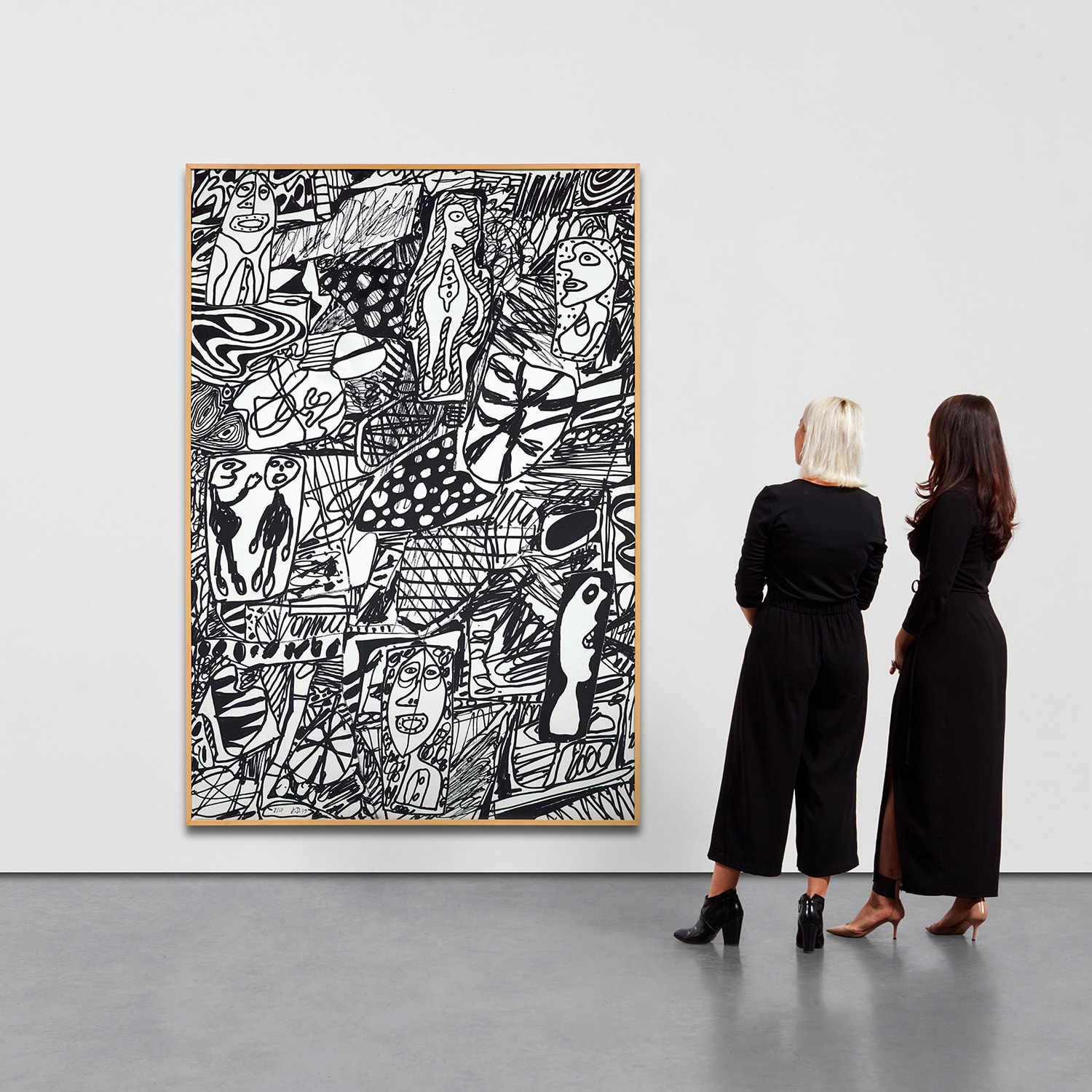



14
Jean Dubuffet
Site de mémoire I (Memory Site I) (L. fasc. XXXII 182b, W. 1262)
1979
Monumental screenprint in black and white, on canvas over wooden stretcher.
99 x 67 in. (251.5 x 170.2 cm)
Signed and numbered 8/10 in gray paint (there were also 3 hors commerce in Roman numerals), published by Pace Editions, Inc., New York, framed.